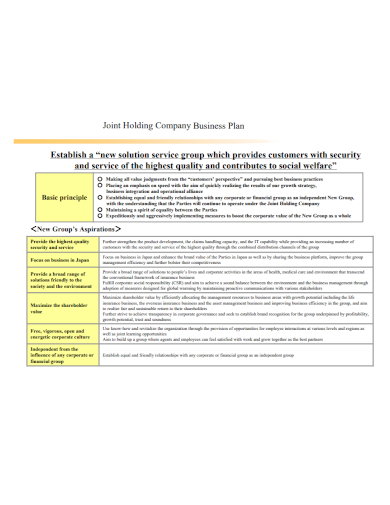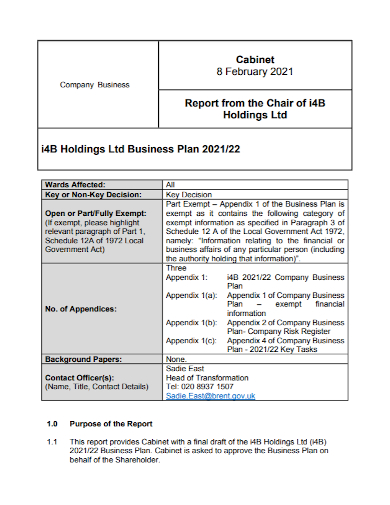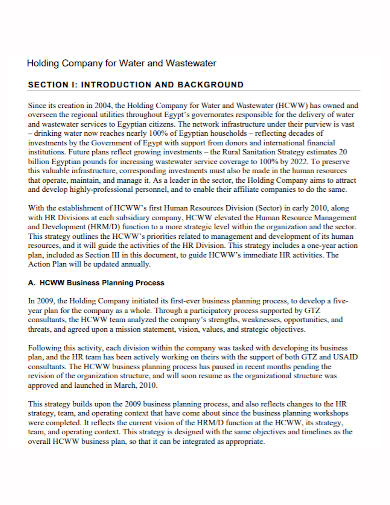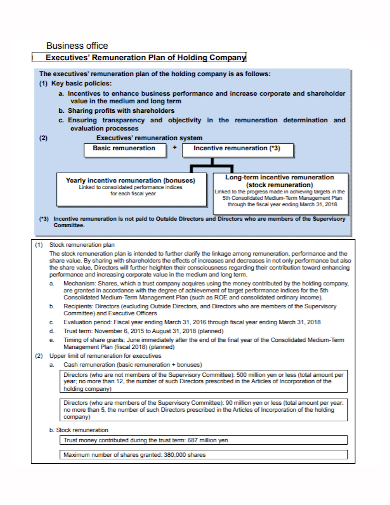A holding company is some sort of like parent business entity. Usually a corporation or LLC. While it doesn’t manufacture or sell anything, the overall purpose of this venture is to hold the current stock or membership interests of other companies. The main holding company just oversees these operations, while most of its subsidiary companies actually sell, manufacture, or conduct their own business operations. Other subsidiaries of a holding company hold real estates, intellectual properties, vehicles, equipment, or anything else that the holding company might view as valuable. Holding companies typically exist to better take advantage of a market. It’s like a joint venture but bigger. If multiple subsidiary companies are under one holding company, then they have the ability to share and pool resources, as well as communicate with each other to see how better they can work together.
Businesses are incredibly difficult entities to manage, much more if your company is a larger company operating multiple subsidiary companies. And trying to make that venture successful is a whole another different level of difficulty, especially if the competition is high and overly centralized. It can be too overwhelming to keep track of every component of your business, making sure everything is taken into account. That is why it is necessary for companies big and small to come up with a comprehensive layout for a plan, regardless if their business is a startup, or a huge holding company such as in this case. A well-laid out plan helps keep everybody on the loop, especially those who are a part of the managerial department of a company like managers and supervisors, to make sure that they know how to handle everything that may or may not be encountered for the entire duration of the company. A well written and well drafted business plan does really well in tying the concept altogether. It keeps business operations smooth, and mostly without any problems along the way.
Trying to run a business without a business plan is generally not a good idea. And it’s not encouraged like, at all, anywhere, since it would usually mean that you are operating a business without following a clear path. Only setting yourself up for failure. And that’s why for holding companies, a business plan can be extremely beneficial since you’re basically handling multiple companies. And you would want to make sure that those subsidiary companies and your holding company itself is going down the right path. But before you begin writing your own holding company business plan, you have to get to know the document first to get the best out of it. Check out these holding company business plan samples that we have listed for you down below. Once you’ve acquainted yourself aptly with the document, feel free to use these samples as guides or even as templates for when you want to begin drafting your own business plan.
4+ Holding Company Business Plan Samples
1. Holding Company Business Plan Template
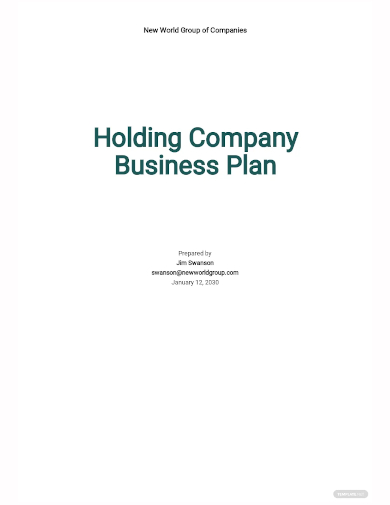
2. Joint Holding Company Business Plan
3. Sample Holding Company Business Plan
4. Standard Holding Company Business Plan
5. Holding Company Remuneration Business Plan
What Is a Holding Company Business Plan?
A business plan is simply a document that enumerates and describes how a business would want to define the steps that its own management will take to reach the goals that they have set for themselves. A business plan is like a roadmap, or a guideline of sorts, that the entire company can follow depending on how the different departments of the company work with it. Departments like marketing, financial, and operational. Aside from that, business plans can also be used to attract potential business partners and investors even before your company has been fully established. Certainly a good way to secure additional funds and support in the earliest stages of your business. Despite the benefits of the document being more helpful for startup businesses and new companies, every company and organization should be able to come up with their own comprehensive business plan. Properly doing so will give you a tool that you can change and adapt over time, as well as inspect how close you are to reaching your goal. A well written business plan is a document that is able to outline the projected costs of the venture and its estimated outcomes. As well as inspect the potential pitfalls that every decision made by the management will come with. Even though it’s prominently and widely used in the corporate and business industry, it is still pretty rare to see two business plans from different companies to be completely identical. That is because a lot of these companies prefer to deal with their problems on their own unique way. And more often that not they do have more unique problems than the same ones.
Elements of a Holding Company Business Plan
The length of a business plan varies heavily depending on the nature and the scope of the business that which your plan will cover. But it is pretty common for business plans to be as long as 15 to 20 pages at most. And while it is true that no two business plans are completely alike, they still do operate with the same elements. These elements are listed and will be discussed in more detail down below.
1. Executive Summary
Your business plan should begin with an executive summary that highlights what the company is and what is stands for. It should present details regarding your mission-vision values, company leadership, employees and employee operations, as well as where the company is located.
2. Products and services
It should then present the products and the services that the company is offering. It should include a list of prices, product lifespan, duration of services, as well as the number of benefits a customer may gain once that have engaged with your business. You can also include details like manufacturing and production processes, as well as patents and proprietary technology, though that is really up to you.
3. Market analysis
A company needs to have a perfect understanding of its target customer base and their respective demographics. An aspect that is ramped up to eleven now that you want to be a holding company, which means that you will be operating with an even wider target market. Proper market analysis will give you an idea of who or what the current competition is and how to stay ahead of the competition. It would also outline the expected consumer demand and how difficult it would be to capitalize over that.
4. Marketing strategy
After ample market analysis, try to identify the strategies that you will put in place to attract the larger customer base and have them continuously engaged with your business operations. You would want a constant stream of clients and customers, so figure out how you plan to achieve that. Talk about how you plan to reach your market by highlighting a clear distribution channel that revolves around your marketing and advertising campaigns, and where these campaigns will be disseminated through.
5. Financial planning
A well laid out financial plan can be very appealing to investors and potential business partners who wish to operate within a company that has the ability to return a good investment. So make sure that your financial planning section reflects just that. Financial statements, balance sheets, and other necessary financial information must be present.
6. Budget
Each company needs to have a proper budget set up and in place. Budget planning should include the costs, manufacturing, development, marketing, as well as the expenses that your business will be a part of.
FAQs
What is the difference between a holding company and an LLC?
A holding company can be an LLC at the same time since it’s simply an entity that holds other companies or subsidiaries as well as their assets.
Is a holding company legal?
Holding company laws generate a corporation or a business formed only to hold stock shares for other businesses or companies.
Can one person own a holding company?
To maximize the protection of your assets, you can opt to form two LLCs, one a holding company, and one an operating company.
One last important thing to remember about a business plan is that the document is not supposed to be static. It’s ‘live’, meaning that the document has to be checked and updated regularly to see your business’ progress in real time.
Related Posts
FREE 9+ 30-Day Marketing Plan Samples in PDF | MS Word | Apple Pages | Google Docs
FREE 3+ Sales Team Action Plan Samples in PDF | MS Word | Apple Pages | Google Docs
Marketing Plan For Small Business Samples
FREE 7+ Fashion Business Plan Samples in PDF
FREE 10+ Sprint Planning Samples In MS Word | Google Docs | PDF
FREE 10+ Wedding Planning Samples in MS Word | Apple Pages | Powerpoint | PDF
FREE 9+ Monthly Study Planner Samples in PSD | Illustrator | InDesign | PDF
FREE 9+ Sample Curriculum Planning Templates in PDF | MS Word
FREE 10+ Teacher Development Plan Samples in MS Word | Google Docs | Apple Pages | PDF
FREE 10+ Basketball Practice Plan Samples in PDF
FREE 12+ School Business Plan Samples in PDF | MS Word | Apple Pages | Google Docs
FREE 7+ Client Strategic Plan Samples in PDF | MS Word
FREE 11+ Trucking Business Plan Templates in PDF | MS Word | Google Docs | Pages
FREE 7+ Small Hotel Business Plan Samples PDF | MS Word | Apple Pages | Google Docs
FREE 14+ Bakery Business Plans in MS Word | PDF | Google Docs | Pages

